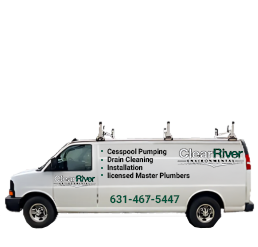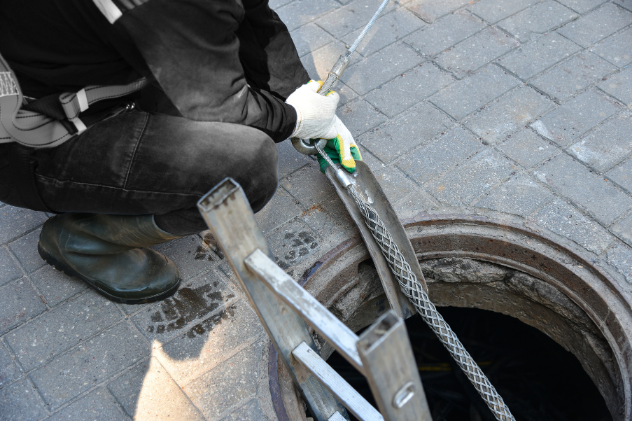Quick and Efficient Sewer and Drain Cleaning Services in Long Island
Clear River Environmental provides expert sewer and drain cleaning services throughout Long Island with immediate response times. Our skilled experts handle everything from routine maintenance to emergency repairs using advanced equipment and proven techniques. We offer 24-hour drain and sewer line cleaning for urgent situations that can’t wait. When you search for “sewer and drain service near me,” our reliable team delivers affordable solutions.
Long Island's Most Trusted Emergency Sewer and Drain Service Available
Clear River Environmental delivers professional sewer and drain cleaning services across Long Island with unmatched reliability. Our comprehensive drain and sewer services cover everything from routine maintenance to complex emergency repairs. We serve residential and commercial properties throughout the region with advanced equipment and proven techniques that deliver lasting results. When you search for “sewer and drain cleaning near me,” you’ll find our team ready to respond immediately. We provide 24-hour drain and sewer line cleaning for urgent situations that can’t wait. Our skilled technicians handle blockages, root intrusion, pipe damage, and system failures with precision. We offer affordable sewer and drain solutions without compromising quality or reliability. As Long Island’s trusted sewer and drain cleaning company, we protect both your property and the local environment through safe, effective methods.
Emergency Response Available
We provide 24-hour drain and sewer cleaning when you need it most. Our technicians respond quickly to prevent water damage and restore your plumbing system to routine operation immediately.
Affordable Service Solutions
You get quality sewer and drain cleaning without breaking your budget. We offer competitive pricing with clear quotes, so you know exactly what you pay for professional results.
Complete System Repair
Our drain and sewer repair services fix problems at their source. We don't just clear blockages - we identify and resolve underlying issues to prevent future costly breakdowns.
Advanced Cleaning Technology
You benefit from cutting-edge equipment that removes stubborn clogs and buildup effectively. Our high-pressure water jetting and specialized tools restore full flow capacity to your sewer and drain systems.
Local Expert Service
When you search "sewer and drain service near me," you find Long Island's trusted specialists. We know local plumbing challenges and provide personalized solutions that work for your specific needs.
Environmental Safety Commitment
Our sewer and drain cleaning company uses eco-friendly methods that protect your property and local waterways. We combine effective cleaning with environmental responsibility for sustainable long-term results.
Don't Wait for Problems!
Your blocked drains need immediate professional attention from experts.
WHY CHOOSE US
Trust Long Island's Most Reliable Sewer and Drain Cleaning Specialists
Clear River Environmental provides superior sewer and drain cleaning services with unmatched reliability throughout Long Island.
Local Long Island Specialists
We know Long Island's plumbing challenges and provide customized sewer and drain solutions for your specific needs.
Advanced Professional Equipment
We use the latest tools and technology to deliver superior results for all your sewer and drain repair requirements.
Environmental Protection Methods
Our eco-friendly sewer and drain cleaning company protects local waterways while solving your plumbing problems safely.
Emergency Service Available
Our 24-hour drain and sewer cleaning team responds immediately to urgent problems that threaten your property.
Transparent Pricing
You receive honest, upfront estimates for affordable sewer and drain services with no hidden fees or unexpected charges.
Permanent Solutions Not Patches
We fix your drain and sewer service problems completely the first time, preventing costly recurring issues and failures.


Installations
Customers

OUR PROVEN METHOD
Complete Sewer and Drain Service Process
Initial Problem Assessment
We inspect your sewer and drain system thoroughly using advanced video cameras to identify all issues accurately.
Professional Equipment Setup
Our technicians prepare specialized tools and high-pressure water jetting equipment for effective drain and sewer cleaning.
Comprehensive System Cleaning
We remove all blockages, debris, and buildup from your sewer and drain lines using proven professional cleaning methods.
Complete Repair Implementation
Our team performs any necessary sewer and drain repair work to fix damaged pipes and restore optimal system function.
Final Quality Inspection
We test your entire system thoroughly and provide you with detailed results to ensure complete sewer and drain service.

Fast, Affordable Sewer and Drain Services in Long Island
We believe quality plumbing services should be accessible to every Long Island property owner. Our affordable sewer and drain cleaning doesn’t compromise on quality or reliability. We provide upfront quotes with no hidden fees, so you know exactly what to expect. When you need a dependable sewer and drain cleaning company, Clear River Environmental delivers professional service at competitive rates. Our commitment to environmental responsibility means we use methods that protect both your property and the surrounding ecosystem.
Ready To Restore Your Plumbing in Long Island?
Don’t let sewer and drain problems disrupt your life. Contact Clear River Environmental today for fast, professional service that gets your plumbing back to normal. Our team is standing by to provide the expert sewer and drain cleaning service you need, when you need it. Call us now or schedule your service online. Your Long Island sewer and drain cleaning specialists are ready to help.

Our Complete Sewer and Drain Services for Long Island Residents
Clear River Environmental provides comprehensive drain and sewer services throughout Long Island with professional equipment and experienced technicians. Our sewer and drain cleaning company handles residential and commercial properties with equal expertise. We offer 24-hour drain and sewer cleaning for emergency situations that require immediate attention. When you search for “sewer and drain service near me,” our team responds quickly with affordable sewer and drain solutions. We use advanced water jetting technology and video inspection cameras to diagnose problems accurately and implement effective repairs. Our comprehensive approach ensures your sewer and drain systems operate at peak performance year-round.
- Emergency Response │
- Video Inspections |
- Hydro Jetting │
- Root Removal
- Pipe Repairs │
- Blockage Clearing │
- Preventive Maintenance │
- System Restoration
Frequently Asked Questions
Our affordable sewer and drain cleaning services start at competitive rates with transparent quotes. We provide upfront cost estimates with no hidden fees, so you know exactly what you'll pay. The cost depends on the severity of the blockage and the specific drain and sewer services required.
Most standard drain cleaning jobs take 1-3 hours to complete. However, complex sewer and drain repair work may require additional time, depending on the problem's severity. We provide realistic time estimates before we begin any work on your system.
We use professional-grade hydro-jetting equipment, drain snakes, and video inspection cameras for thorough sewer and drain cleaning. Our advanced tools remove stubborn blockages, tree roots, and built-up debris effectively. This equipment ensures we provide complete solutions rather than temporary fixes.
Our technicians perform video inspections to determine whether you need sewer and drain repair or simple cleaning. We identify cracks, breaks, or structural damage that require repair versus blockages that need removal. This diagnostic approach ensures you get the best solution for your specific problem.
Common causes include grease buildup, hair accumulation, tree root intrusion, and aging pipes that need professional attention. Regular sewer and drain cleaning prevents most recurring issues from developing into major problems. We identify the main cause and provide long-term solutions to prevent future backups.
Get Professional Service
Your sewer and drain problems need immediate attention from experts.
